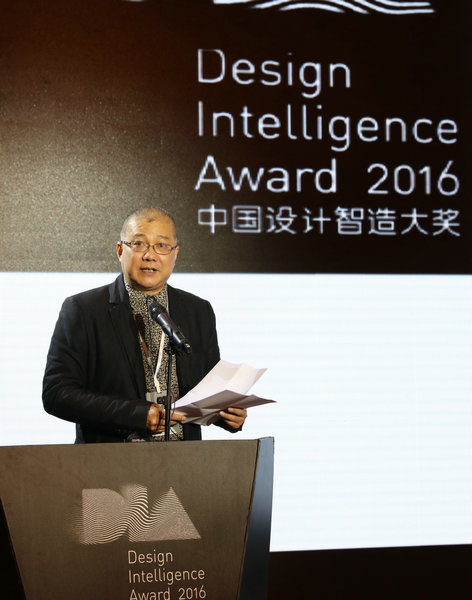New awards to cheer bright ideas in industrial design
Updated: 2016-01-12 11:02
By Wang Kaihao(China Daily)
|
|||||||||||
 |
|
Xu Jiang, president of the China Academy of Art.[Photo provided to China Daily] |
The Design Intelligence awards were launched by the Hangzhou-based China Academy of Art on Friday to encourage innovative industrial design.
The winners of the awards that are jointly sponsored by the university, the China Industrial Design Association and the local government of East China's Zhejiang province will be announced in May after a 10-member panel finalizes the list.
Song Jianming, a professor at the China Academy of Art, who is also the president of the awards' organizing committee, says the awards distinguish themselves from other such honors in China with closer ties to the market and new judging criteria. China now has dozens of design awards that are presented annually.
"The biggest difference is that we have money," Song says, jokingly. "A design award must better serve the public rather than being only influential in professional circles."
The event includes 5 million yuan ($758,000) in total, and its highest award-DIA Gold-will set a new record in China's international design awards, with its 1 million yuan prize.
More than 20 venture capital companies are being roped in by the organizers to turn the winning products into items of daily use.
"Previously, such awards in China mostly focused on quality, function and forms of blueprints," Song says. "This time, we want to expand to cultural values and combine different sectors."
He says the judging panel for the awards will look at how technology and aesthetics have been mixed together while designing different products, as well as how marketing methods have been applied and ecological concerns taken into consideration.
Song is confident that the awards will "reframe China's industry design standards".
Xu Jiang, president of the China Academy of Art, says: "When overseas visitors come to China, they want to enjoy our traditional gardens, calligraphy and delicate silk pieces. They actually admire unique Oriental aesthetics."
He says that the awards were aimed at mixing advanced scientific technology and traditional Chinese wisdom to redefine modern lifestyles.
Zhejiang's status as an economic powerhouse will likely help the awards grow, Xu says.
Though just-born, the awards will aspire to get attention from overseas.
Hideichi Misono, director of Japan Industrial Design Association, says: "In Japan, the design industry association includes many small-scale enterprises.
"Many young designers may have good ideas but they may lack the opportunities to get noticed or make their ideas known to the market."
These awards can be such a bridge for Chinese designers to not only market themselves, but also mark their ideas as different from the rest of world, he says.
Methieu Bernard, a professor at the Nantes Atlantic Design School, considers it more important to nurture Chinese designers for world markets rather than bring more foreign design projects to China.
"Designers need to embrace more cultures and communicate with users, companies and engineers," he says.
Liu Ning, director of China Industrial Design Association, believes the industry is no longer playing an auxiliary role in the economy. It is now moving to the center.
"Creativity is now under the spotlight," Liu says.
China's industrial designs grew in the late 1970s, but largely in areas such as textiles. The growth of household electronics market and large-scale urban construction led to a boom in the design business by 2000.
The changes have reflected the country's growth, and this year will witness contribution of design to public innovation, Liu adds.
Related Stories
China urged to upgrade its industrial design savvy 2015-12-02 15:05
New awards to cheer bright ideas in industrial design 2016-01-12 08:00
Industrial design competition kicks off in Wuxi 2015-04-12 14:19
Wuxi holds industrial design competition 2015-04-08 16:23
Industrial design competition kicks off in Wuxi 2015-02-11 17:15
Today's Top News
Protest goes violent as rift on refugees escalates
Investors to diversify assets globally to lower risks
Going mobile
Wealth of options for China's super-rich
Man with knife shot dead outside Paris police station
Trading halted after shares fall 7% in opening minutes
China voices its 'resolute opposition' to DPRK test
Design exhibition to attract Chinese art works
Hot Topics
Lunar probe , China growth forecasts, Emission rules get tougher, China seen through 'colored lens', International board,
Editor's Picks

|

|

|

|

|

|






